Glute activation exercises can truly transform how you move and train. Ever wondered why your squats sometimes hurt? These moves might be the missing key for stronger, safer workouts.
why glute activation matters before workouts
Understanding why glute activation matters before workouts is key to improving your fitness. Often, our glute muscles (buttocks) are inactive due to sitting for long periods. This means they don’t fire properly during exercises, leading to other muscles trying to do their job instead.
When your glutes are awake and ready, they help stabilize your pelvis and spine. This is super important for exercises like squats, deadlifts, and lunges. Without proper glute engagement, you might put extra stress on your knees and lower back, increasing the risk of injury. Activating your glutes first ensures they are primed to work, leading to stronger movements and better results.
Improved Performance and Injury Prevention
By including glute activation exercises in your warm-up, you can significantly boost your workout performance. When these powerful muscles are engaged, you’ll feel stronger and more stable. This leads to deeper squats, heavier lifts, and a more efficient workout overall.
More importantly, proper glute activation helps prevent common injuries. If your glutes aren’t working, your hamstrings or lower back might overcompensate. This can lead to pain or strains in these areas. Taking a few minutes to wake up your glutes before a workout can make a big difference in keeping you safe and allowing you to train consistently.
best glute band exercises for beginners
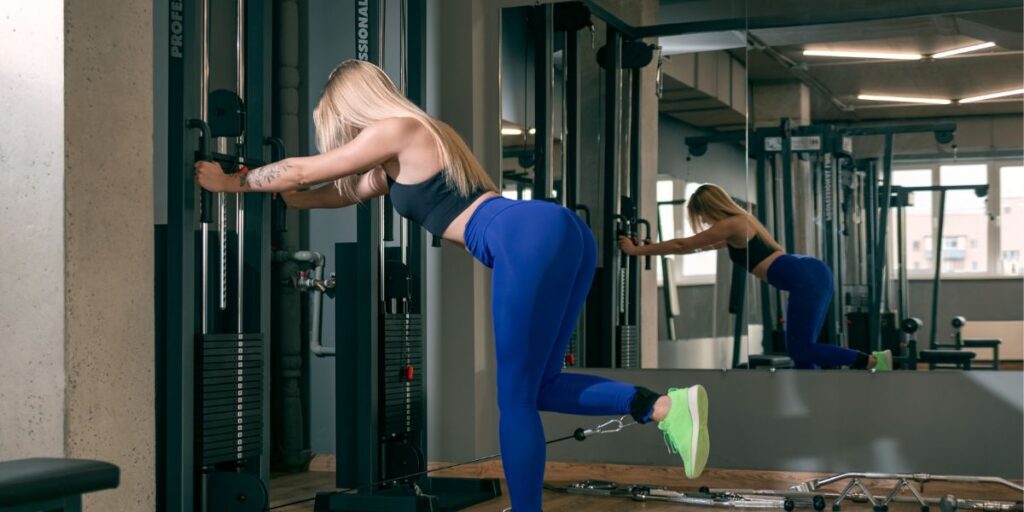
For anyone new to working out, resistance bands are fantastic tools to target your glutes effectively. They add extra resistance, making even simple movements more challenging and helping to activate those important muscles. Using bands can help you feel your glutes working more, which is crucial for building strength and preventing injuries.
These exercises are great for warming up your glutes before a main workout or as a standalone routine to build foundational strength. They are easy to learn and can be done almost anywhere.
Top Glute Band Exercises for Beginners
Let’s look at a few simple yet powerful exercises you can do with a resistance band:
1. Banded Glute Bridges
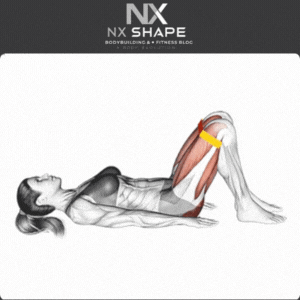
Lie on your back with your knees bent and feet flat on the floor, hip-width apart. Place a resistance band around your thighs, just above your knees. Pressing your feet into the ground, lift your hips towards the ceiling until your body forms a straight line from your shoulders to your knees. Squeeze your glutes at the top and push your knees slightly outward against the band. Slowly lower back down.
2. Banded Clamshells
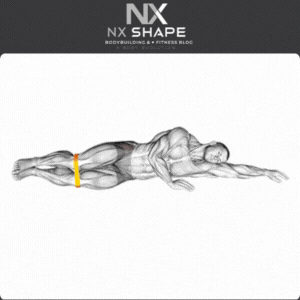
Lie on your side with your knees bent at a 45-degree angle and one hand supporting your head. Place the resistance band around your thighs, just above your knees. Keeping your feet together, open your top knee outwards like a clamshell. Focus on squeezing your top glute. Slowly bring your knee back down. Make sure your hips stay stacked and don’t roll backward.
3. Banded Lateral Walks
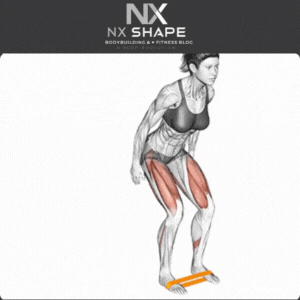
Place the resistance band around your ankles or just above your knees. Stand with your feet hip-width apart and a slight bend in your knees. Take small steps sideways, keeping tension on the band at all times. Make sure your toes point forward and you maintain a slight squat position. This exercise really targets the side of your glutes, which helps with hip stability.
Tips for Using Resistance Bands
When starting, choose a lighter band to get used to the movements. Focus on slow, controlled movements rather than speed. Really try to feel your glutes working with each repetition. As you get stronger, you can move to a band with more resistance to continue challenging your muscles.
how to do glute bridge activation correctly
Learning how to do glute bridge activation correctly is a fundamental step for anyone looking to strengthen their glutes and improve overall body stability. This exercise is simple but very effective when done right. It helps wake up your glute muscles, making them ready to work during more complex movements like squats or deadlifts, and can even help relieve lower back tension.
The glute bridge focuses on isolating your gluteal muscles (buttocks) to ensure they are properly engaged. When performed with good form, you’ll feel the burn directly in your glutes, not your lower back or hamstrings.
Step-by-Step Guide to the Perfect Glute Bridge
Follow these steps to perform a glute bridge with correct form:
- Lie on Your Back: Start by lying flat on your back on a mat. Bend your knees, keeping your feet flat on the floor, about hip-width apart. Your heels should be close enough to your buttocks that you can just touch them with your fingertips. Your arms can rest by your sides, palms down.
- Engage Your Core: Before lifting, gently pull your belly button towards your spine to brace your core. This helps protect your lower back.
- Lift Your Hips: Push through your heels and squeeze your glutes as you lift your hips off the floor. Continue lifting until your body forms a straight line from your shoulders to your knees. Avoid arching your lower back too much.
- Squeeze at the Top: At the top of the movement, give your glutes an extra squeeze. Hold this position for a second or two, really focusing on the muscle contraction.
- Lower Slowly: Slowly lower your hips back down to the starting position with control. Don’t just let gravity drop you.
Common Mistakes to Avoid
- Over-arching your back: This puts strain on your lower back. Focus on lifting with your glutes and keeping your core tight.
- Pushing off your toes: Make sure you are pushing through your heels; this helps activate the glutes more effectively.
- Not squeezing your glutes: The main goal is glute activation. If you’re not feeling it in your glutes, adjust your form.
Tips for Better Activation
To enhance glute activation, consider placing a resistance band just above your knees and gently pressing your knees outwards against the band as you lift. You can also try elevating your feet slightly by placing them on a low step or yoga block for a greater range of motion, but master the basic movement first.
glute warm up routines to improve performance
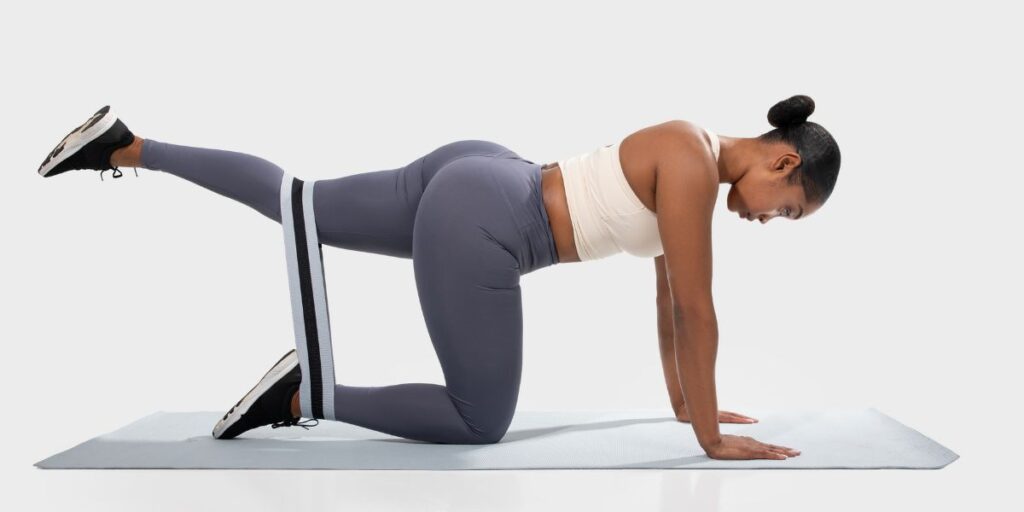
Adding specific glute warm up routines to improve performance can make a huge difference in your workouts. Just like any other muscle group, your glutes need to be properly warmed up and activated before you ask them to lift heavy or move explosively. A good warm-up routine gets blood flowing to the area, increases your range of motion, and signals your brain to engage these powerful muscles.
When your glutes are ready, you’ll feel stronger and more stable during exercises like squats, lunges, and deadlifts. This means you can lift more effectively and with less risk of injury, as your glutes will take on their share of the work instead of other muscles overcompensating.
Effective Glute Warm-Up Exercises
Here are some simple exercises you can include in your routine to get your glutes firing:
1. Dynamic Leg Swings
Stand tall, holding onto something for balance if needed. Swing one leg forward and backward in a controlled motion, aiming to loosen up your hips and glutes. Keep your core tight and try not to arch your back. After several swings, switch legs.
2. Hip Circles
Stand tall, again using support if necessary. Lift one knee up to hip height, then rotate your hip in a circular motion, as if drawing a circle with your knee. Perform circles in both directions (inward and outward) to warm up all parts of the hip and glute. Repeat on the other leg.
3. Banded Side Steps (Crab Walks)
Place a resistance band around your ankles or just above your knees. Stand with your feet hip-width apart and a slight bend in your knees. Take small steps sideways, keeping tension on the band. This targets your glute medius, which is key for hip stability and preventing knee issues.
4. Glute Bridges (Light or Bodyweight)
As discussed, the glute bridge is excellent for activation. Include 1-2 sets of 10-15 repetitions to gently wake up your glute max. Focus on squeezing your glutes at the top of the movement.
Why These Routines Boost Performance
These exercises not only warm up the glutes but also improve neuromuscular connection—how well your brain talks to your muscles. This means your glutes will be more responsive and effective when you start your main workout. A well-activated glute complex contributes to better power output, improved balance, and reduced risk of strains or sprains in surrounding areas, directly leading to better overall performance and safer training sessions.
tips to prevent squat injury with proper glute activation
Squats are a fantastic exercise for building leg and core strength, but they can also lead to injuries if not done correctly. A common reason for pain in the knees or lower back during squats is inactive or weak glute muscles. When your glutes don’t engage properly, other muscles, like your quads and lower back, have to work harder. This can lead to imbalances, poor form, and ultimately, injury. Learning tips to prevent squat injury with proper glute activation is crucial for safer and more effective workouts.
By ensuring your glutes are awake and ready before you squat, you create a stable foundation for your entire movement. This helps keep your knees aligned, protects your spine, and allows you to lift more weight with better form.
Pre-Squat Glute Activation Drills
Before you even touch a barbell, spend 5-10 minutes on specific glute activation exercises. These drills warm up the muscles and improve the mind-muscle connection, helping you feel your glutes working throughout your squat. Great options include:
- Banded Glute Bridges: Lie on your back, knees bent, band above knees. Lift hips, push knees out against the band.
- Banded Lateral Walks: Place a band around your ankles or knees. Take small sideways steps, staying in a slight squat.
- Clamshells: Lie on your side, knees bent. Keep feet together, open top knee against a band.
Perform 2-3 sets of 10-15 repetitions for each exercise to get your glutes firing.
Form Cues During Squats
Even with a good warm-up, it’s important to maintain glute engagement during the squat itself. Think about these cues:
- “Knees Out”: As you descend, actively push your knees outward, trying to keep them aligned with your toes. This naturally engages your glutes.
- “Spread the Floor”: Imagine you are trying to spread the floor apart with your feet. This creates tension in your hips and external rotators, involving your glutes more.
- “Sit Back”: Think about sitting back into a chair rather than just dropping straight down. This helps shift your weight onto your heels and better recruits your glutes and hamstrings.
- Squeeze at the Top: As you stand up, give your glutes a strong squeeze at the top of the movement to fully extend your hips.
By consistently applying these tips, you can strengthen your glutes, improve your squat mechanics, and significantly reduce your risk of injury, leading to more productive and pain-free training sessions.
Unlock Your Potential with Glute Activation
As we’ve seen, adding glute activation exercises to your routine is a game-changer for your workouts. From simple banded moves to mastering the glute bridge, these techniques ensure your most powerful muscles are ready to work. This not only boosts your strength and performance but also plays a huge role in keeping you safe from common injuries, especially during complex lifts like squats.
By taking a few minutes to warm up and activate your glutes, you’re investing in a more effective, stable, and pain-free fitness journey. So, make glute activation a regular part of your training and feel the difference it makes in every movement.


